Elia Cereda
Dalle Molle Institute for Artificial Intelligence
Training on the Fly: On-device Self-supervised Learning aboard Nano-drones within 20 mW
Aug 06, 2024



Abstract:Miniaturized cyber-physical systems (CPSes) powered by tiny machine learning (TinyML), such as nano-drones, are becoming an increasingly attractive technology. Their small form factor (i.e., ~10cm diameter) ensures vast applicability, ranging from the exploration of narrow disaster scenarios to safe human-robot interaction. Simple electronics make these CPSes inexpensive, but strongly limit the computational, memory, and sensing resources available on board. In real-world applications, these limitations are further exacerbated by domain shift. This fundamental machine learning problem implies that model perception performance drops when moving from the training domain to a different deployment one. To cope with and mitigate this general problem, we present a novel on-device fine-tuning approach that relies only on the limited ultra-low power resources available aboard nano-drones. Then, to overcome the lack of ground-truth training labels aboard our CPS, we also employ a self-supervised method based on ego-motion consistency. Albeit our work builds on top of a specific real-world vision-based human pose estimation task, it is widely applicable for many embedded TinyML use cases. Our 512-image on-device training procedure is fully deployed aboard an ultra-low power GWT GAP9 System-on-Chip and requires only 1MB of memory while consuming as low as 19mW or running in just 510ms (at 38mW). Finally, we demonstrate the benefits of our on-device learning approach by field-testing our closed-loop CPS, showing a reduction in horizontal position error of up to 26% vs. a non-fine-tuned state-of-the-art baseline. In the most challenging never-seen-before environment, our on-device learning procedure makes the difference between succeeding or failing the mission.
Fusing Multi-sensor Input with State Information on TinyML Brains for Autonomous Nano-drones
Apr 03, 2024Abstract:Autonomous nano-drones (~10 cm in diameter), thanks to their ultra-low power TinyML-based brains, are capable of coping with real-world environments. However, due to their simplified sensors and compute units, they are still far from the sense-and-act capabilities shown in their bigger counterparts. This system paper presents a novel deep learning-based pipeline that fuses multi-sensorial input (i.e., low-resolution images and 8x8 depth map) with the robot's state information to tackle a human pose estimation task. Thanks to our design, the proposed system -- trained in simulation and tested on a real-world dataset -- improves a state-unaware State-of-the-Art baseline by increasing the R^2 regression metric up to 0.10 on the distance's prediction.
On-device Self-supervised Learning of Visual Perception Tasks aboard Hardware-limited Nano-quadrotors
Mar 06, 2024
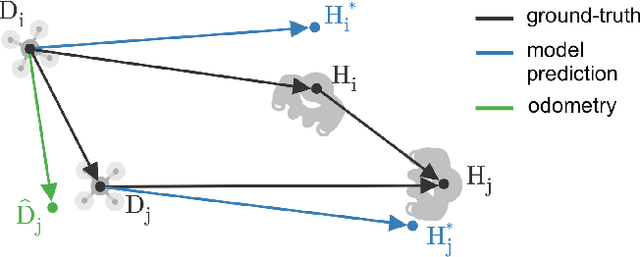
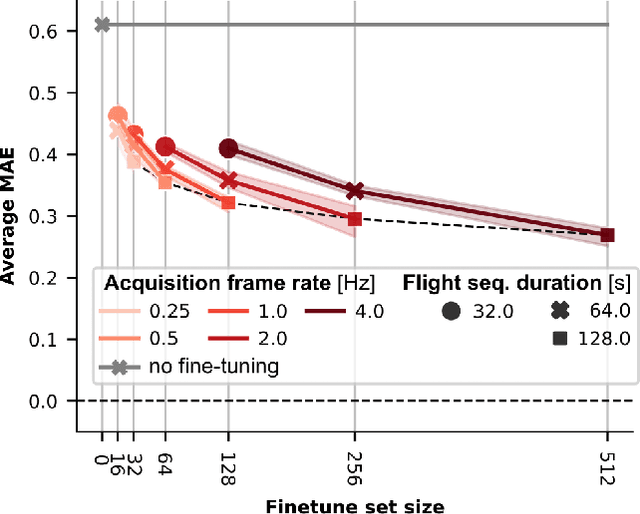
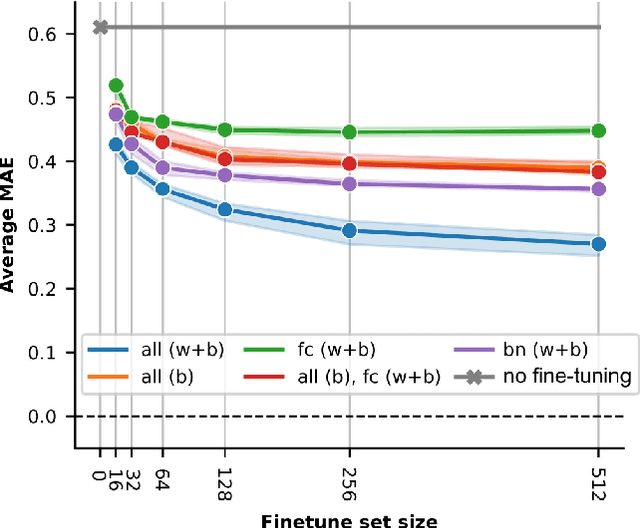
Abstract:Sub-\SI{50}{\gram} nano-drones are gaining momentum in both academia and industry. Their most compelling applications rely on onboard deep learning models for perception despite severe hardware constraints (\ie sub-\SI{100}{\milli\watt} processor). When deployed in unknown environments not represented in the training data, these models often underperform due to domain shift. To cope with this fundamental problem, we propose, for the first time, on-device learning aboard nano-drones, where the first part of the in-field mission is dedicated to self-supervised fine-tuning of a pre-trained convolutional neural network (CNN). Leveraging a real-world vision-based regression task, we thoroughly explore performance-cost trade-offs of the fine-tuning phase along three axes: \textit{i}) dataset size (more data increases the regression performance but requires more memory and longer computation); \textit{ii}) methodologies (\eg fine-tuning all model parameters vs. only a subset); and \textit{iii}) self-supervision strategy. Our approach demonstrates an improvement in mean absolute error up to 30\% compared to the pre-trained baseline, requiring only \SI{22}{\second} fine-tuning on an ultra-low-power GWT GAP9 System-on-Chip. Addressing the domain shift problem via on-device learning aboard nano-drones not only marks a novel result for hardware-limited robots but lays the ground for more general advancements for the entire robotics community.
A Sim-to-Real Deep Learning-based Framework for Autonomous Nano-drone Racing
Dec 14, 2023



Abstract:Autonomous drone racing competitions are a proxy to improve unmanned aerial vehicles' perception, planning, and control skills. The recent emergence of autonomous nano-sized drone racing imposes new challenges, as their ~10cm form factor heavily restricts the resources available onboard, including memory, computation, and sensors. This paper describes the methodology and technical implementation of the system winning the first autonomous nano-drone racing international competition: the IMAV 2022 Nanocopter AI Challenge. We developed a fully onboard deep learning approach for visual navigation trained only on simulation images to achieve this goal. Our approach includes a convolutional neural network for obstacle avoidance, a sim-to-real dataset collection procedure, and a navigation policy that we selected, characterized, and adapted through simulation and actual in-field experiments. Our system ranked 1st among seven competing teams at the competition. In our best attempt, we scored 115m of traveled distance in the allotted 5-minute flight, never crashing while dodging static and dynamic obstacles. Sharing our knowledge with the research community, we aim to provide a solid groundwork to foster future development in this field.
Sim-to-Real Vision-depth Fusion CNNs for Robust Pose Estimation Aboard Autonomous Nano-quadcopter
Aug 03, 2023



Abstract:Nano-quadcopters are versatile platforms attracting the interest of both academia and industry. Their tiny form factor, i.e., $\,$10 cm diameter, makes them particularly useful in narrow scenarios and harmless in human proximity. However, these advantages come at the price of ultra-constrained onboard computational and sensorial resources for autonomous operations. This work addresses the task of estimating human pose aboard nano-drones by fusing depth and images in a novel CNN exclusively trained in simulation yet capable of robust predictions in the real world. We extend a commercial off-the-shelf (COTS) Crazyflie nano-drone -- equipped with a 320$\times$240 px camera and an ultra-low-power System-on-Chip -- with a novel multi-zone (8$\times$8) depth sensor. We design and compare different deep-learning models that fuse depth and image inputs. Our models are trained exclusively on simulated data for both inputs, and transfer well to the real world: field testing shows an improvement of 58% and 51% of our depth+camera system w.r.t. a camera-only State-of-the-Art baseline on the horizontal and angular mean pose errors, respectively. Our prototype is based on COTS components, which facilitates reproducibility and adoption of this novel class of systems.
Secure Deep Learning-based Distributed Intelligence on Pocket-sized Drones
Jul 04, 2023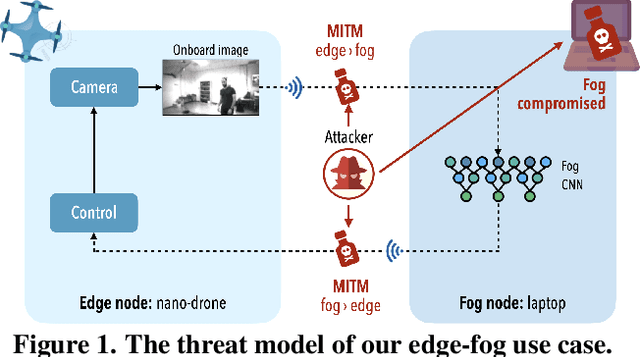

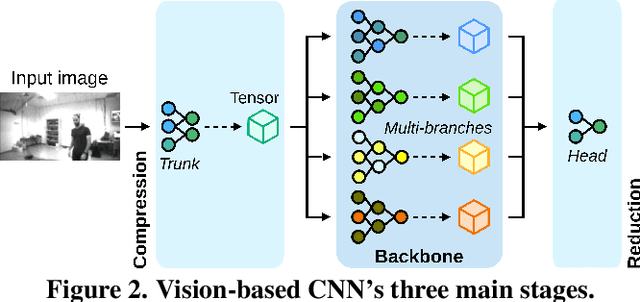
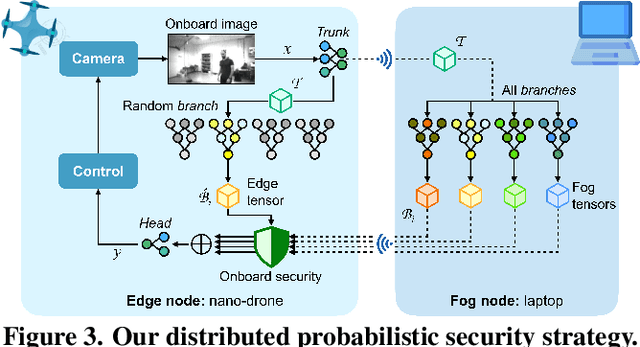
Abstract:Palm-sized nano-drones are an appealing class of edge nodes, but their limited computational resources prevent running large deep-learning models onboard. Adopting an edge-fog computational paradigm, we can offload part of the computation to the fog; however, this poses security concerns if the fog node, or the communication link, can not be trusted. To tackle this concern, we propose a novel distributed edge-fog execution scheme that validates fog computation by redundantly executing a random subnetwork aboard our nano-drone. Compared to a State-of-the-Art visual pose estimation network that entirely runs onboard, a larger network executed in a distributed way improves the $R^2$ score by +0.19; in case of attack, our approach detects it within 2s with 95% probability.
Ultra-low Power Deep Learning-based Monocular Relative Localization Onboard Nano-quadrotors
Mar 03, 2023



Abstract:Precise relative localization is a crucial functional block for swarm robotics. This work presents a novel autonomous end-to-end system that addresses the monocular relative localization, through deep neural networks (DNNs), of two peer nano-drones, i.e., sub-40g of weight and sub-100mW processing power. To cope with the ultra-constrained nano-drone platform, we propose a vertically-integrated framework, from the dataset collection to the final in-field deployment, including dataset augmentation, quantization, and system optimizations. Experimental results show that our DNN can precisely localize a 10cm-size target nano-drone by employing only low-resolution monochrome images, up to ~2m distance. On a disjoint testing dataset our model yields a mean R2 score of 0.42 and a root mean square error of 18cm, which results in a mean in-field prediction error of 15cm and in a closed-loop control error of 17cm, over a ~60s-flight test. Ultimately, the proposed system improves the State-of-the-Art by showing long-endurance tracking performance (up to 2min continuous tracking), generalization capabilities being deployed in a never-seen-before environment, and requiring a minimal power consumption of 95mW for an onboard real-time inference-rate of 48Hz.
Deep Neural Network Architecture Search for Accurate Visual Pose Estimation aboard Nano-UAVs
Mar 03, 2023



Abstract:Miniaturized autonomous unmanned aerial vehicles (UAVs) are an emerging and trending topic. With their form factor as big as the palm of one hand, they can reach spots otherwise inaccessible to bigger robots and safely operate in human surroundings. The simple electronics aboard such robots (sub-100mW) make them particularly cheap and attractive but pose significant challenges in enabling onboard sophisticated intelligence. In this work, we leverage a novel neural architecture search (NAS) technique to automatically identify several Pareto-optimal convolutional neural networks (CNNs) for a visual pose estimation task. Our work demonstrates how real-life and field-tested robotics applications can concretely leverage NAS technologies to automatically and efficiently optimize CNNs for the specific hardware constraints of small UAVs. We deploy several NAS-optimized CNNs and run them in closed-loop aboard a 27-g Crazyflie nano-UAV equipped with a parallel ultra-low power System-on-Chip. Our results improve the State-of-the-Art by reducing the in-field control error of 32% while achieving a real-time onboard inference-rate of ~10Hz@10mW and ~50Hz@90mW.
Vision-State Fusion: Improving Deep Neural Networks for Autonomous Robotics
Jun 13, 2022
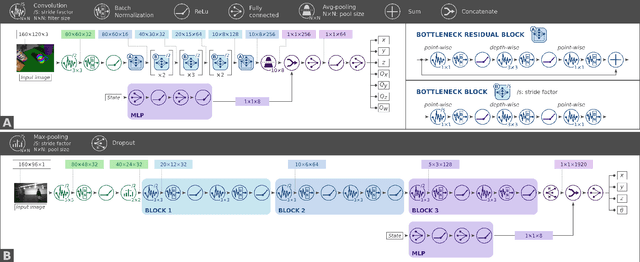
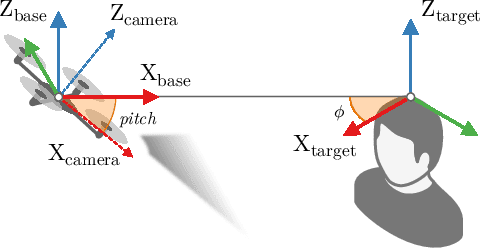
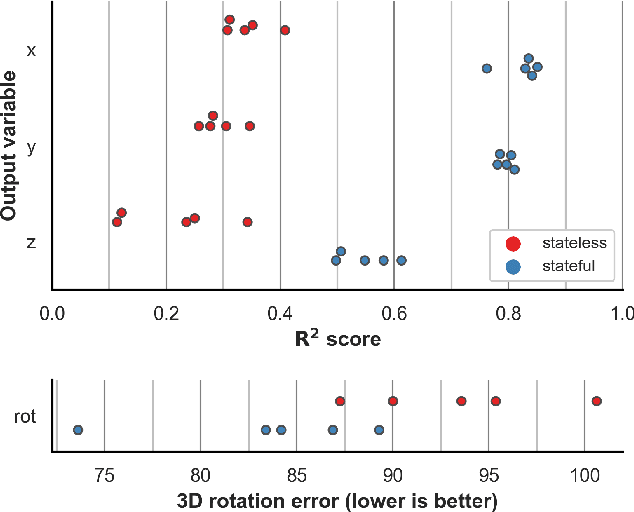
Abstract:Vision-based perception tasks fulfill a paramount role in robotics, facilitating solutions to many challenging scenarios, such as acrobatics maneuvers of autonomous unmanned aerial vehicles (UAVs) and robot-assisted high precision surgery. Most control-oriented and egocentric perception problems are commonly solved by taking advantage of the robot state estimation as an auxiliary input, particularly when artificial intelligence comes into the picture. In this work, we propose to apply a similar approach for the first time - to the best of our knowledge - to allocentric perception tasks, where the target variables refer to an external subject. We prove how our general and intuitive methodology improves the regression performance of deep convolutional neural networks (CNNs) with ambiguous problems such as the allocentric 3D pose estimation. By analyzing three highly-different use cases, spanning from grasping with a robotic arm to following a human subject with a pocket-sized UAV, our results consistently improve the R2 metric up to +0.514 compared to their stateless baselines. Finally, we validate the in-field performance of a closed-loop autonomous pocket-sized UAV in the human pose estimation task. Our results show a significant reduction, i.e., 24% on average, on the mean absolute error of our stateful CNN.
Training Lightweight CNNs for Human-Nanodrone Proximity Interaction from Small Datasets using Background Randomization
Oct 27, 2021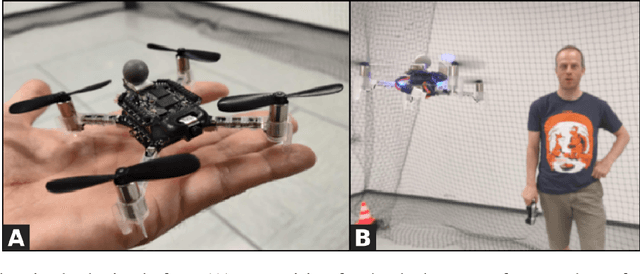
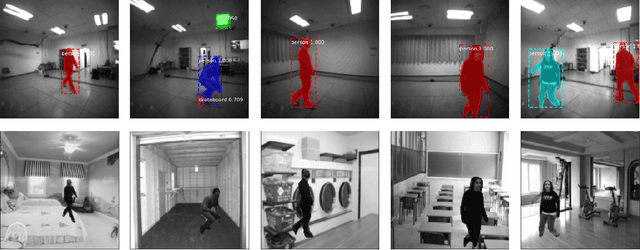

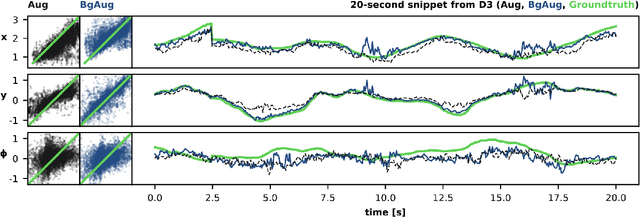
Abstract:We consider the task of visually estimating the pose of a human from images acquired by a nearby nano-drone; in this context, we propose a data augmentation approach based on synthetic background substitution to learn a lightweight CNN model from a small real-world training set. Experimental results on data from two different labs proves that the approach improves generalization to unseen environments.
 Add to Chrome
Add to Chrome Add to Firefox
Add to Firefox Add to Edge
Add to Edge